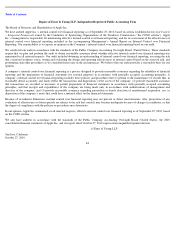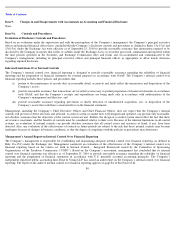Apple 2010 Annual Report Download - page 82
Download and view the complete annual report
Please find page 82 of the 2010 Apple annual report below. You can navigate through the pages in the report by either clicking on the pages listed below, or by using the keyword search tool below to find specific information within the annual report.
Table of Contents
Africa. The Asia-
Pacific segment includes Australia and Asia, but does not include Japan. The Retail segment operates Apple retail stores in 11
countries, including the U.S. Each reportable operating segment provides similar hardware and software products and similar services. The
accounting policies of the various segments are the same as those described in Note 1, “Summary of Significant Accounting Policies.”
The Company evaluates the performance of its operating segments based on net sales and operating income. Net sales for geographic segments
are generally based on the location of customers, while Retail segment net sales are based on sales from the Company’
s retail stores. Operating
income for each segment includes net sales to third parties, related cost of sales and operating expenses directly attributable to the segment.
Advertising expenses are generally included in the geographic segment in which the expenditures are incurred. Operating income for each
segment excludes other income and expense and certain expenses managed outside the operating segments. Costs excluded from segment
operating income include various corporate expenses, such as manufacturing costs and variances not included in standard costs, research and
development, corporate marketing expenses, stock-
based compensation expense, income taxes, various nonrecurring charges, and other
separately managed general and administrative costs. The Company does not include intercompany transfers between segments for management
reporting purposes. Segment assets exclude corporate assets, such as cash, short-term and long-
term investments, manufacturing and corporate
facilities, miscellaneous corporate infrastructure, goodwill and other acquired intangible assets. Except for the Retail segment, capital asset
purchases for long-
lived assets are not reported to management by segment. Cash payments for capital asset purchases by the Retail segment
were $392 million, $369 million and $389 million for 2010, 2009 and 2008, respectively.
The Company has certain retail stores that have been designed and built to serve as high-
profile venues to promote brand awareness and serve as
vehicles for corporate sales and marketing activities. Because of their unique design elements, locations and size, these stores require
substantially more investment than the Company’
s more typical retail stores. The Company allocates certain operating expenses associated with
its high-profile stores to corporate marketing expense to reflect the estimated Company-
wide benefit. The allocation of these operating costs to
corporate expense is based on the amount incurred for a high-
profile store in excess of that incurred by a more typical Company retail location.
The Company had opened a total of 15 high-
profile stores as of September 25, 2010. Amounts allocated to corporate expense resulting from the
operations of high-profile stores were $75 million, $65 million and $53 million for 2010, 2009 and 2008, respectively.
79
























